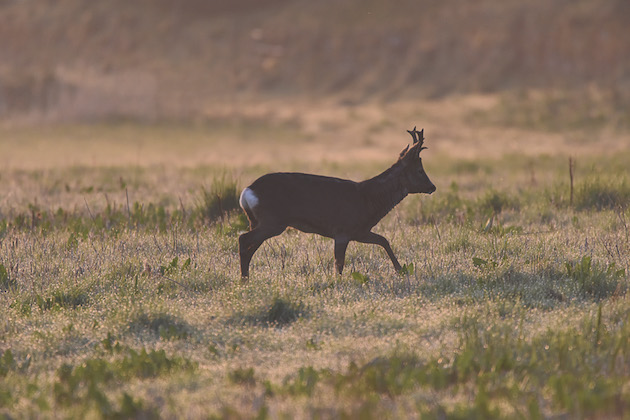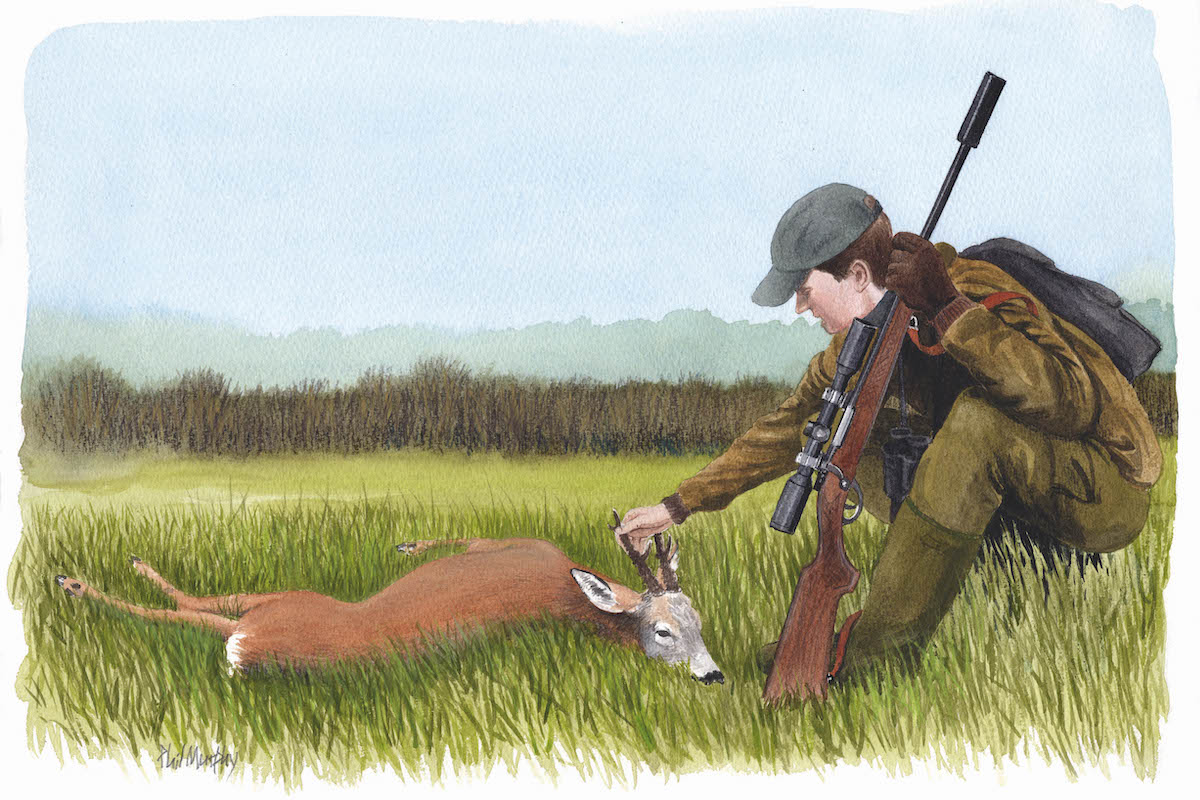English and Welsh roe review 2019
Northumberland leads the table after a busier year than expected, says Tony Dalby-Welsh

Buck walking
Muntjac heads presented for evaluation in 2019 were up a huge 62% on 2018, proof of the spread of this hardy and fecund species.
After such a busy year in 2018, we at the CIC UK Trophy Evaluation Board (TEB) were expecting something of a drop in overall numbers in 2019. However, that proved not to be the case, with just under 100 more heads measured in 2019 and an additional 20 medals awarded. Roe numbers were down a little, but were compensated for by other species.

English and Welsh roe review 2019
The highest score measured came from Northumberland. This should perhaps not be a surprise as we have seen over the past few years an increasing number of quality Northumbrian animals being presented for evaluation. They have slowly been creeping up the scale of heads evaluated. What this tells us is that management methodology in this county is causing the quality of roe to improve rapidly.

C Sharp’s gold-medal head topped the leaderboard at 186.68
Large volume
C Sharp’s 186.68 CIC point head was notable not only for the net weight at 679g, but the relatively large volume at 316cc. Next on the list came from Wiltshire, a traditional source of good heads, and was shot by J Lewis. It achieved 183.43 CIC points, and weighed in at 758g, but had a relatively modest volume at 284cc.

J Lewis’s Wiltshire head scored 183.43
These two heads are prime indicators of the broad relationship in roe between weight and volume. The ratio between those measurements can vary from 65% to 110%. We often get big skulls with large antlers, resulting in heavy weights but with relatively small volumes due to the density of the antlers themselves. The converse is also true, with light heads having large volumes, because of the apparent porosity of the antlers.
The top of the county order of merit has changed little this year. Hampshire produced 10 gold-medal heads, Wiltshire nine and Somerset and Sussex each produced eight gold-medal heads. Northumberland and Dorset were close behind. This order was also reflected in the award of silver and bronze medals, which you can see at shootinguk.co.uk.

This deformed head was assessed by the CIC measurers for a bronze medal
We are often asked if a particular head can be measured, usually because of some form of severe asymmetry. This year the CIC measurers were faced with two such heads and in both cases were able to identify main beams and either the front or rear tines, sufficiently enough to allow the CIC formula to be applied. Neither of them made particularly high scores; the first took a bronze medal and the second was awarded only 67 CIC points. But it is always worth asking our measurers to have a look at a head, however unlikely or difficult it may appear.
Net weight
Another query we often get is how heavy a trophy has to be to make a medal. Our rule of thumb, now long established and proven through experience, is that for a gold medal the net weight of the skull plus antlers needs to exceed 500g. Silver-medal heads need to be more than 450g and bronze more than 365g. These are net weights, so the weight of the full skull and antlers minus 90g, the deduction for a full skull.
That said, it is interesting to note that we have measured heads at only 330g which made a bronze. However, at the other end of the scale, heads with a 562g net weight did not make gold. It is important that antlers are presented on a full skull in order to gain best advantage.
Hunters will no doubt be aware of the Government’s interest in the restriction of both the import and export of trophy heads to and from the UK. What is sad about the argument against such movement is the apparent lack of knowledge about the extraordinary work done by the CIC and others worldwide in protecting endangered species from hunting.
Since its earliest days, the CIC has often reaffirmed its principles, which define hunting as: “The efficient and sympathetic utilisation of natural resources. Our wildlife constitutes a form of investment that must be preserved and handed down intact to future generations. Only stock which is clearly surplus to breeding requirements should be considered as available for harvesting.
“Hunting was originally carried out to satisfy material needs. But today it can only be justified as part of an overall plan for wise land use and scientific conservation. Careful management and considerate control are man’s inescapable responsibility. When all the issues are properly understood and principles followed, hunting can provide substantial benefits, moral as well as material.”
Full species results
Quality
In the UK there are few hunters for whom the search for a bigger trophy is the only reason that they hunt. The CIC system itself is designed to support the management of wild game in a measured, sensible and humane way. The evaluations of post-mortem trophies provide a clear indication of both the quality of the species’ population and the effectiveness of the management within that species’ localised range.
Most evaluations that we undertake are the product of that day-to-day management, itself necessary because of the lack of natural predators and man’s invasion of the animals’ traditional space. Perhaps we need to find a different word to ‘trophy’ to reflect better the true nature of what these mementos mean to the hunter.
As someone who has witnessed the deleterious effects of the lack of humane management and the subsequent die-off of large numbers of roe, I can only hope those who make the legislation, who are neither involved in such management nor subject to the manifestation of their own decisions, will think carefully.
This year potentially offers difficult times for those who manage the nation’s deer populations. We all
need to be aware of the implications
of legislation founded on ignorance and emotion rather than hard scientific evidence.
It is incumbent on us all, when asked, that we should be clear in
our understanding of what good
humane management is really all
about. Whatever we do, we should
not assume that what we do and
enjoy doing now we shall be able
to continue into the future.
Full details on the website where you will also find contact details for all CIC qualified measurers in the UK.









